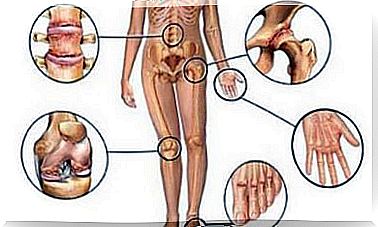What Exercises To Encourage In Older Adults?
Various international organizations agree that the elderly should engage in physical activity of any kind every day. Keep in mind that certain types of exercises are more recommended than others for older adults.
Regular exercise is essential for healthy aging. This offers many health benefits for older adults, including reducing the risk of all-cause mortality, controlling chronic diseases, and preventing premature death.
Why is it important for older adults to exercise?
Life expectancy in the population is increasing. This has caused an increasing interest in promoting a high quality of life related to old age, for which physical activity is a key element.
Exercise, as a planned, structured and repetitive physical activity, is vital for the maintenance of physical condition and function in older adults. This will help them in their independence, improving motor function and control.
With this in mind, according to a special issue of BioMed Research International from 2018, the main reasons why it is important for older adults to exercise are the following:
- For physical health: exercise is a protective factor for non-communicable diseases (NCDs) such as cardiovascular diseases, strokes, diabetes and some types of cancer.
- Mental health: physical activity is associated with better mental health, a delay in the onset of dementia, and a better quality of life and well-being. Exercise can also have benefits for the brain centers that support executive control.
- For independence: exercise can help maintain quality of life, reducing falls among the elderly in general and those with joint diseases.

Recommended Levels of Physical Activity for Older Adults
Older adults (65 years and older) should spend at least 150 minutes a week in moderate aerobic physical activity, or engage in some form of vigorous aerobic physical activity for 75 minutes. An equivalent combination of moderate and vigorous activities is also valid, according to the World Health Organization (WHO).
On the other hand, the same institution recommends that older adults spend up to 300 minutes a week doing moderate aerobic exercise. Or 150 minutes a week of vigorous aerobic physical activity.
As for older adults with reduced mobility, the WHO proposes physical activities to improve balance and prevent falls, three days or more a week. Exercises that strengthen major muscle groups are helpful.
Exercises Older Adults Can Do
In the previous section we have talked about different types of activity: light, moderate, vigorous, aerobic, strength, flexibility and balance. With this in mind, we are going to see what types of exercises older adults can do.
Light physical activity
Any kind of gentle movement is considered light physical activity. This includes, for example, the following:
- Get up to find something or to do a simple task.
- Move around the house.
- Walk slowly
- Doing simple housework: sweeping, dusting, vacuuming, making the bed.
- Stand.
It is important to remember that, for these activities to count towards the daily total, they must be done for at least 10 minutes at a time.
Moderate aerobic activity
Moderate aerobic activity implies an increase in heart rate and temperature, as well as the need to breathe a little faster. This is a good way to tell when it goes from light to moderate.
Some moderate intensity aerobic exercises that older adults can do include the following:
- Walk briskly.
- Directed aquatic exercises: aquagym or aqua aerobics.
- Ride a bike.
- Dance.
- Mow the lawn, take care of a garden or a vegetable garden.
Vigorous physical activity
Vigorous physical activity goes one step further and involves a greater increase in heart rate and temperature, as well as a need to breathe much faster. This type of exercise should not be done by older adults who are not physically prepared. Instead, they’d better get more moderate exercise.
Some vigorous physical activities that older adults can do include the following:
- Jogging or running.
- To swim.
- Riding a bike at a good pace.
- Walking uphill or climbing stairs at a pace.
- Dance energetically.

Muscle strengthening, flexibility and balance
Exercising with weights or resistance tools (elastic bands, for example) is an excellent way to work on muscle strengthening in older adults. However, there are other types of exercises that, in addition to strengthening the muscles, also help to work on flexibility and balance.
In this sense, Pilates, Yoga and Tai Chi are three variants that work at the same time on muscle strengthening, flexibility and balance, in addition to coordination and the mind-body connection.
There are physical exercise programs designed for older adults focused on improving mobility and increasing lifespan, taking into account the specific needs of well-defined groups.
Exercises for older adults are accessible
It is never too late to start exercising. There is no doubt that maintaining a regular routine can be a challenge at any age. But this is not an excuse.
What’s more, the more aches and pains you have, the more reasons there are to make the effort. Because a good exercise program for older adults can mitigate discomfort and increase lifespan. The important thing in these cases is to put yourself in the hands of a professional.








